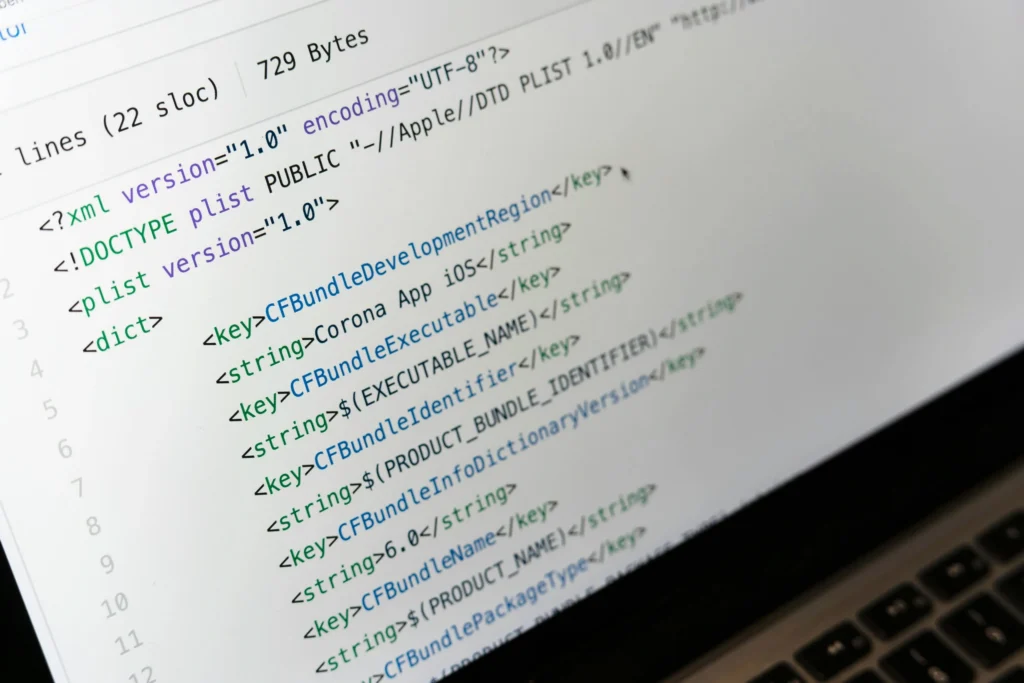The Difference Between Native and Hybrid App Development

The Difference Between Native and Hybrid App Development
In the fast-paced world of mobile innovation, businesses are increasingly turning to apps as the primary channel for customer engagement, revenue generation, and brand growth. But before any line of code is written, one crucial decision needs to be made: native app development or hybrid app development?
Choosing the right development approach is not just a technical question—it’s a strategic business decision that impacts performance, user experience, budget, and long-term scalability. In this in-depth guide, we’ll break down the key differences, advantages, disadvantages, and ideal use cases for native and hybrid app development.
📱 What Is Native App Development?
Native app development refers to building mobile applications specifically for a single operating system—either iOS or Android—using that platform’s own development tools and programming languages.
✅ Platform-Specific Languages & Tools:
- iOS: Developed using Swift or Objective-C within Apple’s development environment, Xcode.
- Android: Built with Kotlin or Java using Android Studio.
Because native apps are tailored for one platform, they offer deep integration with the operating system and can utilize the device’s full capabilities, from hardware sensors to system-level APIs.
🔍 Advantages of Native App Development
1. Superior Performance
Native apps are compiled into machine code optimized for the specific platform, which results in:
- Faster load times
- Smooth animations and transitions
- More responsive interfaces
Real Example:
Instagram’s core experience is native, which helps them handle real-time camera usage, heavy image rendering, and swift interactions—essential features for their audience.
2. Full Access to Device Features
Native apps have direct access to:
- GPS and geolocation services
- Bluetooth, NFC, and biometric authentication
- Camera, microphone, and advanced sensors
Example: A fitness app like Strava leverages native APIs to access real-time location tracking and health data via Apple HealthKit or Google Fit.
3. Exceptional User Experience (UX)
Each platform has its own design conventions (Material Design for Android, Human Interface Guidelines for iOS). Native apps naturally follow these, making them:
- More intuitive
- More aesthetically aligned with OS
- Easier for users to navigate
4. Better Security
Native apps benefit from built-in platform security such as:
- Encrypted storage
- Biometric login
- OS-level permissions
- Regular updates from the platform vendor (Apple or Google)
5. Offline Functionality
Since native apps can store data locally and use background processes more efficiently, they perform better even without internet access.
Think of apps like Google Maps and Spotify, which offer offline modes natively and seamlessly.
⚠️ Drawbacks of Native App Development
Despite the benefits, native apps come with a few key trade-offs:
❌ Higher Development Costs
You’ll need separate codebases for iOS and Android, which means:
- Hiring specialized developers for each platform
- Doubling testing and QA efforts
- Maintaining two versions of the app
❌ Longer Time to Market
More development time is required, especially if both platforms are launched simultaneously.
❌ Limited Code Reusability
What works on iOS likely won’t work on Android—meaning nearly zero reuse of backend logic or UI components across platforms.
🌐 What Is Hybrid App Development?
Hybrid app development is a cross-platform approach where developers use web technologies (HTML, CSS, JavaScript) to create an app that runs inside a native shell. This app is then distributed via app stores just like a native app.
Popular hybrid frameworks include:
- React Native (Meta)
- Flutter (Google)
- Ionic
- Apache Cordova (PhoneGap)
These tools compile the web code into native components, allowing the app to function across platforms with a single codebase.
✅ Advantages of Hybrid App Development
1. Faster Time to Market
Using one codebase to serve multiple platforms speeds up development significantly.
Use Case: Startups building a Minimum Viable Product (MVP) often choose hybrid to test ideas quickly and gather user feedback.
2. Lower Development and Maintenance Costs
Because you’re maintaining one codebase instead of two:
- Fewer developers are needed
- Bug fixes and updates are faster
- Total project cost is reduced
Stat: A hybrid approach can reduce development costs by 30–50% depending on project complexity.
3. Cross-Platform Compatibility
One hybrid app can be deployed to:
- iOS
- Android
- Web (in some cases, like with Flutter or Ionic)
This broadens your market reach without duplicating effort.
4. Access to Web Developer Talent
If your team is already familiar with web technologies, transitioning to hybrid mobile development is much easier.
5. Streamlined Updates
Updating features or fixing bugs in a hybrid app is more efficient, as the changes apply across all platforms simultaneously.
⚠️ Drawbacks of Hybrid App Development
❌ Performance Limitations
Hybrid apps rely on a web view, which adds a performance layer between the code and the native platform. This can lead to:
- Slower animations
- Laggy transitions
- Lower responsiveness on older devices
❌ Restricted Access to Native Features
Hybrid frameworks often depend on third-party plugins for native functionality. If a plugin doesn’t exist or is outdated, your access to advanced features can be limited.
❌ Inconsistent User Experience
Hybrid apps may not perfectly follow native UI/UX standards, leading to:
- Interfaces that feel “off” to users
- Platform-specific gestures or navigation elements behaving unpredictably
❌ Reliance on Framework Updates
You’re dependent on the framework (e.g., Flutter, React Native) and its ecosystem. If it becomes deprecated or introduces breaking changes, it can affect your app’s stability.
🔄 Native vs Hybrid: Key Differences at a Glance
| Aspect | Native App | Hybrid App |
|---|---|---|
| Performance | Excellent (optimized per platform) | Moderate (web view-dependent) |
| Development Cost | High (two codebases) | Low (one codebase) |
| Time to Market | Slower | Faster |
| User Experience (UX) | Superior (platform-consistent) | Good (may lack polish) |
| Code Reusability | Minimal | High |
| Access to Device APIs | Full, native access | Limited, plugin-dependent |
| Maintenance | Complex (update both versions) | Easier (single codebase updates) |
🧠 When to Choose Native App Development
Choose native if your app:
- Requires high performance (e.g., gaming, augmented reality)
- Depends on complex integrations with hardware (camera, GPS, biometrics)
- Demands pixel-perfect UI aligned with platform conventions
- Is aimed at users who expect flawless responsiveness
- Has the budget to support platform-specific development
Real-World Example:
Uber, while starting with hybrid technologies, transitioned to native apps to handle complex real-time tracking and geolocation logic more efficiently.
💡 When to Choose Hybrid App Development
Choose hybrid if your app:
- Needs to launch quickly across platforms
- Has a limited budget
- Does not require advanced device interactions
- Is a proof of concept or MVP
- Will primarily display content, forms, or simple user interfaces
Real-World Example:
Instagram uses React Native for certain parts of its app to speed up development while retaining native elements where performance is critical.
🧭 Making the Right Decision for Your Business
There’s no one-size-fits-all answer. Instead, ask the following questions:
- What’s your primary goal: Speed, performance, reach, or cost-efficiency?
- Who is your target audience and what devices do they use?
- How often will you need to update the app?
- What level of user experience do you want to deliver?
- What is your in-house technical expertise?
If you’re still unsure, consider building a hybrid MVP to test market interest, and then scale to native development if performance or UX becomes a limiting factor.
Conclusion
Choosing between native and hybrid app development isn’t just about coding preferences—it’s about aligning your technology decisions with your business vision. Native apps deliver top-tier performance and polished UX, ideal for brands aiming to offer premium digital experiences. Hybrid apps, on the other hand, are perfect for speed, flexibility, and cost control.
By understanding the trade-offs and benefits of each approach, you can make a confident, future-ready decision—and bring your mobile vision to life with purpose and precision.


